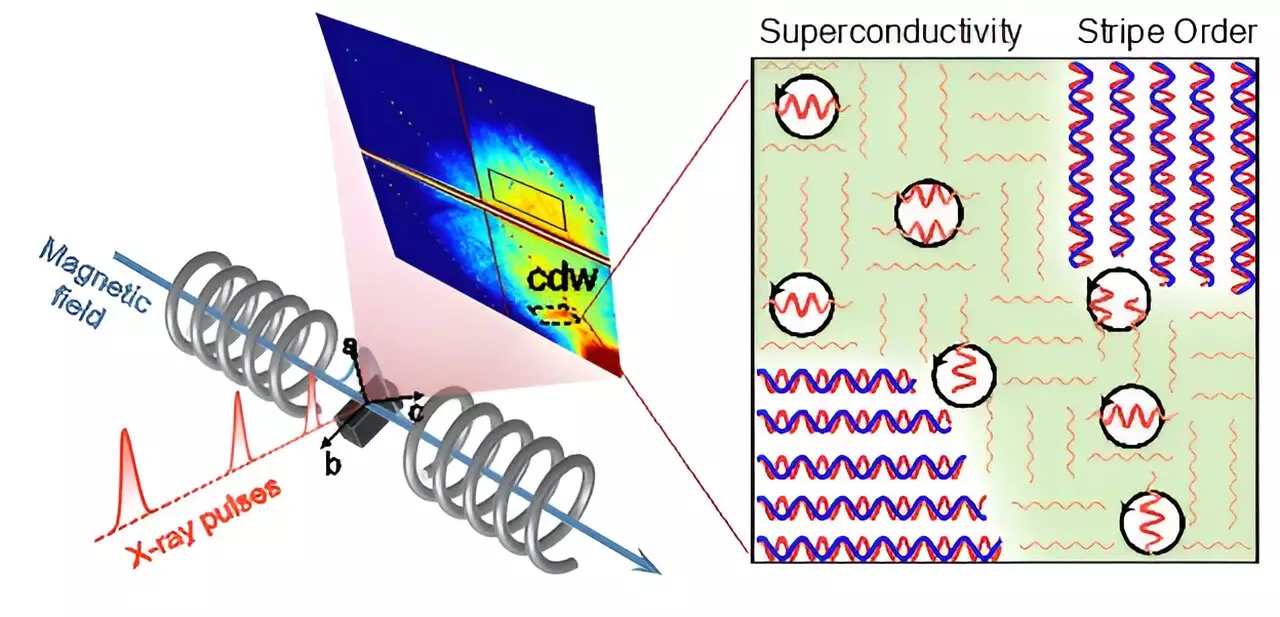Cuprate superconductors, renowned for their ability to conduct electricity without resistance at elevated temperatures, continue to baffle scientists with their complex behaviors. Central to understanding these materials is the intricate dance between charge density waves (CDW) and magnetic spin orders. Traditionally, as scientists have explored the superconducting phase of cuprates, they have believed that superconductivity and these competing orders could not exist harmoniously. Recent research published in *Nature Communications* has challenged this long-standing view, unveiling a fascinating interplay that may unlock new avenues for developing high-temperature superconductors.
Rethinking Electron Interactions
At the heart of cuprates are the electrons that not only possess intrinsic properties of spin and charge but also engage in powerful interactions that can lead to unconventional states of matter. Unlike conventional metals, where electron spins tend to cancel each other out and lead to a uniform charge distribution, cuprates display robust electron-electron interactions. This interaction paves the way for novel states, including the stripe state, where electron spins can align in an ordered fashion along defined stripes. This finding suggests that the regime of cuprate superconductivity is more nuanced than previously thought, specifically in how different emergent orders—such as spin density waves (SDW) and CDWs—compete or cooperate.
Short-Range Charge Order: A Surprising Ally
The research unveiled a striking realization that short-range CDW can coexist with short-range superconductivity, rather than suppressing it as once believed. This revelation not only defies the conventional wisdom surrounding charge density fluctuations but also opens up a promising avenue for enhancing superconductivity. The experiments conducted on La1.885Sr0.115CuO4 under high magnetic fields demonstrated that these short-range phenomena could not only coexist but also bolster the superconducting properties. This synergy between seemingly opposing forces is reminiscent of a delicate balancing act, where the right conditions allow both to thrive amidst a complex material landscape.
Implications for High-Temperature Superconductors
The prospect of stabilizing superconductivity in cuprates through the manipulation of short-range charge order is not just an academic curiosity; it sets the stage for practical applications. The opportunity to enhance superconductivity under high temperatures and magnetic fields could revolutionize fields ranging from quantum computing to energy transmission. As researchers navigate through the intricacies of vortex states—dynamic structures formed within the superconducting phase—the findings indicate that controlling these states could lead to new technological breakthroughs, facilitating a new phase of superconducting materials that could surpass existing limitations.
Charting New Territory
Employing X-ray measurements in previously untested high magnetic field conditions allowed for the detailed observation of the cuprate’s internal structure. The ability to observe transitions between static and liquid vortex states under different magnetic pressures not only refines our understanding of cuprate superconductivity but illuminates a broader picture of how different quantum phenomena are interrelated. The striking correlation between vortex melting and CDW intensity further solidifies the groundwork for developing a unified quantum framework that encompasses both charge density waves and superconductivity.
This groundbreaking research heralds a new era in superconductivity, challenging prior assumptions and illuminating the path forward for advanced material design. By leveraging the power of short-range charge order, we are inching closer to unraveling the enigmatic world of cuprates, paving the way for innovations that could transform multiple scientific and technological landscapes.

